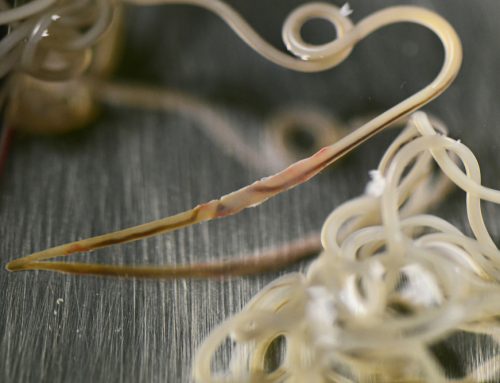Cats are vulnerable to several viruses, and unfortunately, many of the most common viral diseases currently have no definitive cure. As a cat owner, you likely want to know more about these deadly diseases, and how you can protect your pet. Our team at Pierson Pet Hospital would like to educate you on three concerning viruses, to ensure your cat remains happy and healthy.
Feline immunodeficiency virus in cats
Feline immunodeficiency virus (FIV) attacks a cat’s immune system, making them susceptible to other infectious pathogens. FIV is usually transmitted through an infected cat’s bite. FIV has three phases:
- Acute phase — During the acute phase, a cat’s lymph nodes will be enlarged, and they may have a fever. Signs are typically mild during this phase.
- Latent phase — During the latent phase, cats exhibit no signs. This phase can last months to years, and some cats never progress past this phase.
- Chronic phase — During the chronic phase, cats become progressively immunocompromised, and highly susceptible to secondary infections. They frequently develop chronic or recurrent infections targeting the skin, eyes, mouth, urinary tract, and upper respiratory tract. FIV cats also are much more likely to develop cancer or immune-mediated disorders. Once cats become ill, survival time is usually no more than a few months.
Feline leukemia virus in cats
Feline leukemia virus (FeLV) is a highly contagious virus that is transmitted through an infected cat’s bite, shared food and water, and mutual. FeLV has three stages:
- Abortive stage — During the abortive stage, a cat is infected, but they clear the virus.
- Regressive stage — During the regressive stage, a cat is infected, and the virus circulates in their bloodstream before they clear the infection.
- Progressive stage — During the progressive stage, a cat sheds the virus in their saliva, urine, feces, milk, and ocular and nasal discharge. During this time, they are extremely susceptible to FeLV-associated diseases, including lymphoma, leukemia, anemia, and secondary infections.
Managing cats affected by feline immunodeficiency virus and feline leukemia
FIV and FeLV are diagnosed through a blood test, and therapy is focused on treating secondary infections and alleviating the signs. The only way to definitively protect your cat from FIV and FeLV is to prevent their exposure. Keep your cat indoors away from cats who could potentially infect them, and have a new cat tested to ensure they are not infected before you bring them home. Since FIV transmission typically requires a bite from an infected cat, if you have a multi-cat household, they should be fine living together, as long as they do not exhibit aggressive behavior. An effective FeLV vaccine is available, but is not a guarantee. Since FeLV is spread through close contact, you should isolate your sick cat from other household cats to prevent transmission. Currently, no definitive cure is available for either virus, but you can take the following precautions, if your cat is affected by FIV or FeLV:
- Veterinary care — Take your cat to Pierson Pet Hospital every six months to be evaluated by our veterinary professionals. They should also have a complete blood count, a biochemistry analysis, urinalysis, and a fecal examination performed at least once a year. Our team will develop the best vaccination protocol for your cat, and you should ensure their vaccines are kept up to date. You should also control fleas, ticks, heartworms, and intestinal worms by giving your cat appropriate prevention medications.
- At-home care — Confine your cat indoors to prevent transmission to other cats, and to reduce exposure to secondary infections. Feed a nutritionally complete and balanced diet. Monitor your cat’s weight, behavior, and health, and alert our veterinary professionals if you notice any changes.
Feline infectious peritonitis

Feline infectious peritonitis (FIP) is caused when feline enteric coronavirus (FeCV) mutates, resulting in the cat’s white blood cells spreading the infection through their body. This mutation occurs in only about 10 percent of FeCV-infected cats. A cat affected by FIP cannot transmit the virus to another cat. FIP has two presenting forms:
- Effusive (or wet) form — Initial signs can include decreased appetite, weight loss, and fever. As the disease progresses, a thick, yellow fluid accumulates in the chest and abdomen, causing a pot-belly appearance.
- Non effusive (or dry) form — Similar to the effusive form, initial signs include decreased appetite, weight loss, and fever. As the disease progresses, the cat’s eyes become extremely inflamed, and neurological signs, including ataxia and seizures, occur.
The dry form is typically more insidious, but both forms result in death. A test to definitively diagnose FIP is not available, because titers cannot distinguish between FIP and FeCV. However, a cat who is exhibiting indicative signs and has a high titer is presumed to have FIP. Experimental treatments are being tested, but no definitive treatment is currently available. The only way to protect your cat from FIP is to ensure they do not contact an FeCV-infected cat. A vaccine exists, but the effectiveness is questionable.
Keeping your cat indoors, away from other cats, is your best chance to prevent these deadly viral infections. If you are concerned your cat may have a viral infection, or you would like to discuss vaccinating your cat for FeLV or FIP, contact our team at Pierson Pet Hospital, to schedule an appointment.







Leave A Comment